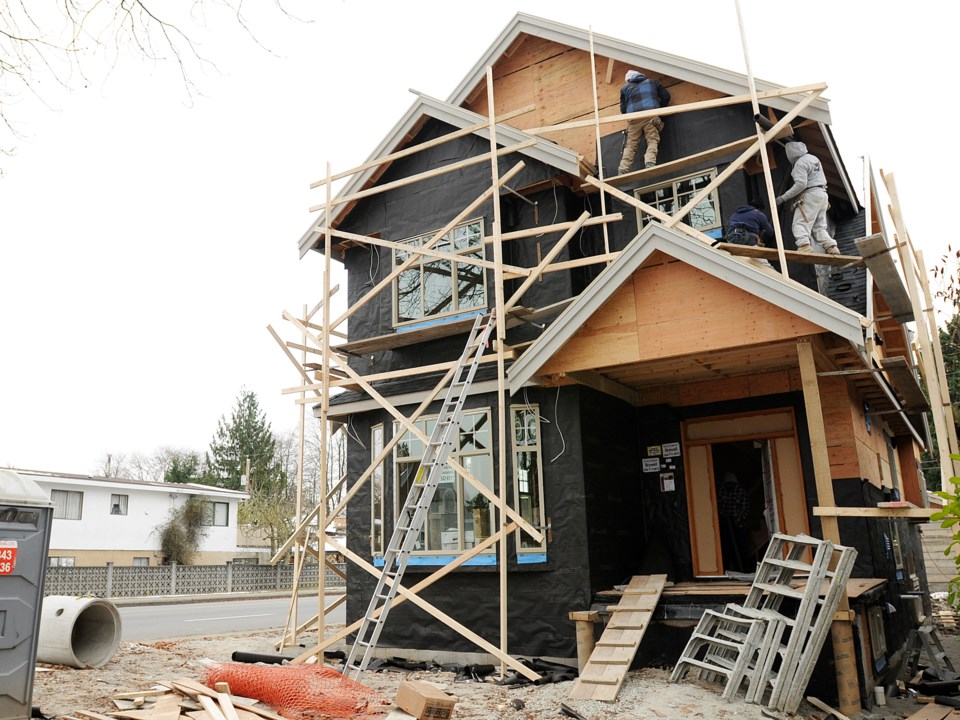Anyone building a home in Burnaby will soon have to hire an energy advisor and test for air-tightness to comply with new green building standards.
Council recently approved the new policy, which applies to the construction of âPart 9â buildings â single-family homes, duplexes and multi-unit buildings with a footprint of less than 600 square metres (6,458 square feet) â and aims to improve energy efficiency. Â
The building requirements for these smaller structures come just as similar â commercial buildings taller than three storeys or with a footprint larger than 600 square metres (6,458 sq. ft.) â are set to come into force July 1.Â
As of Sept. 1, those building Part 9 homes will be required to comply with Step 1 of the BC Energy Step Code, a new component of the provinceâs building code. They will have to work with an energy advisor during the design phase and test for air-tightness both mid-construction and upon completion.Â
The builder will only be issued an occupancy permit once documentation of the above requirements are provided to the city.
Missing from the new requirements, however, are any stringent rules for how airtight newly constructed buildings need to be. Instead, Step 1 only requires structures to perform equal to or better than a home built to existing BC Building Code standards.Â
Burnaby then plans to jump to Step 3 of the step code in âapproximately one year,â according to a staff report.Â
âThere will be more stringent requirements in the future, as we bring in the higher steps,â explained Lise Townsend, an ecosystem planner with the City of Burnaby.Â
Asked why Burnaby isnât taking a more urgent approach by introducing stricter rules out of the gate, Townsend said the coming rules are âa fairly significant change in practices and we want to try to set up the builders for success.â
âI can understand the point of view saying we need to do more sooner, but we also need to make sure that what we're requiring has a good chance of success,â she said.
Townsend said the step code introduces a âperformance-based approachâ instead of the BC Building Codeâs prescriptive rules, which state which kind of windows, insulation and other materials builders can use.
Townsend estimated hiring an energy advisor and testing for air-tightness would cost a builder approximately $2,000. She called the cost increase ârelatively modest in the context of the total cost of construction.â
While a central goal of the step code is to create more energy efficient homes, it does not directly address greenhouse gas (GHG) emissions.
âAlthough reducing energy demand can help to save costs and resources, it may not necessarily reduce overall GHG emissions, as a high-efficiency home that uses natural gas will still emit significantly more carbon compared to a home that uses electricity for heating and cooling, regardless of the efficiency step achieved,â the staff report states.Â
But, Townsend said, the city has few options in its policy toolbox to directly address emissions.Â
âWe're hoping to explore whether there are other policy tools that we could use or incentives (we could offer). We're working with our partners, but we don't have a clear path for what that might look like,â she said.Â



